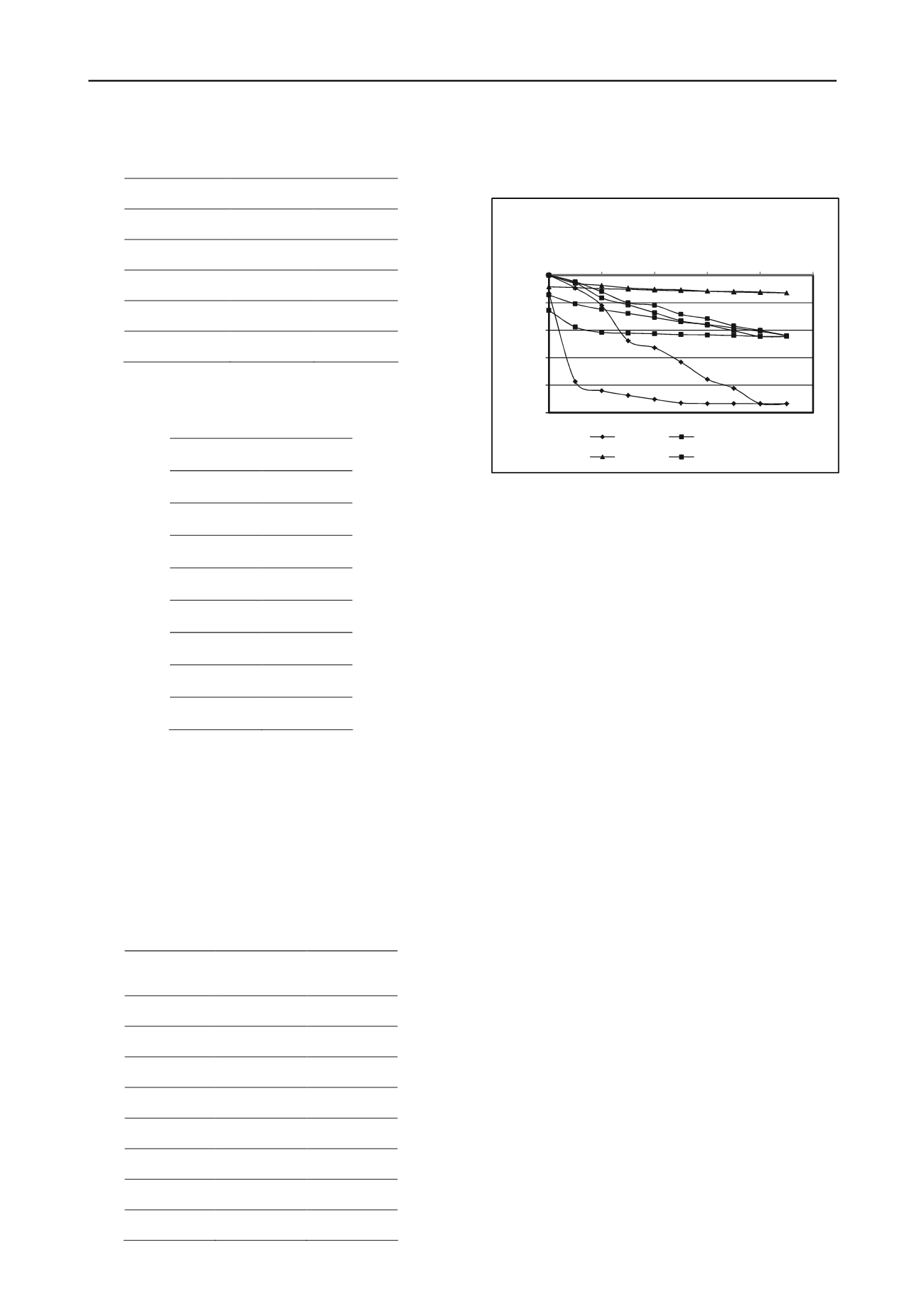
1363
Technical Committee 202 /
Comité technique 202
Table 2. Summary of Petrographic thin section result on Afram Shale
(Source: Department of Geology, Univ. of Ghana).
Sample (%)
Mineralogy
1
2
Quartz
60 - 70
55 - 65
Feldspar
5 - 15
10 - 20
Clay
10 - 20
15 - 20
Organic
Nil
Nil
Table 3. Summary of X-ray fluorescence results based on major
oxides. Source: Ghana Geological Survey Department
Element
Percentages
Na
2
O
1.39
MgO
1.52
Al
2
O
3
8.57
SiO
2
74.96
Fe
2
O
3
2.63
CaO
0.26
others
2.57
L.O.I
8.10
1.1.3
Field test
The field test carried out on the 100m stretch were the
dynamic cone penetrometer (DCP) based TRRL specification
and plate load bearing based on BS 1377:part9 1990
A total of eight (8) test points were carried out for the
DCP between chainage 29+662 and 29+712. Summary of
results is presented in Table 4.
Table 4. Summary of DCP test results
Chainage
Thickness,
mm
Ave CBR, %
29+625
131
150
29+637
43
150
29+650
103.5
140.42
29+662
35
150
29+675
221
130.33
29+687
154
150.14
29+700
69.8
150
29+712
73.5
145.07
Graphical presentation of plate load bearing test and typical
field test performance are shown in Figure 1 and Figure 3
respectively.
0
0.5
1
1.5
2
2.5
0
200
400
600
800
1000
Average settlement, mm
Bearing Pressure, kN/m
2
Load - settlement curves for plate bearing test
Ch29+637
Ch29+662
Ch29+675
Ch29+712
Figure 1. Plate load bearing graphs
1.1.4
Discussion
For quality assurance and statistical representation purposes,
the shale was tested in six different laboratories to evaluate its
geotechnical properties in order to understand its intended
utilization. The conventional laboratory tests that are
normally used for classifying materials in pavement works
are gradation, Atterberg’s limits, plasticity modulus and CBR.
Atterberg’s limits results
, in Table 1, indicate that fine
content is mostly clay and inorganic of low to medium
plasticity. The plasticity modulus (PM) as per the contract
specification stated that values of, at most, 200 are assigned
as base course; those between 200 and 250 are assigned sub-
base course. The PM values obtained from the laboratories
varied between 13.7 and 461.7. These observed values
indicate that the shale could be used as base, sub-base and fill
materials. The CBR, four day soaking, values obtained range
between 8% and 12%, which falls below the expected 15%
contract specification for fill.
During the construction stages an exposed section of the
shale material on the road corridor, under traffic and
environmental conditions, gave an interesting outlook. This
prompted the implementation and evaluation of the trial
section using conventional road construction methods.
From Table 2, the petrographic analyses revealed that
the subject material is mostly siliceous. The study revealed
that the quartz had been re-worked, an indication of a
transported clastic sediment or an occurrence of a low grade
metamorphism of the material. The high SiO
2
content of
about 75% shown in Table 3 and the low clay content indicate
the siliceous nature of the shale material.
The eight DCP test points were selected randomly within
the 100m stretch. CBR values were obtained using the Kleyn
and Van Harden equation below.
Log (Cbr) = 2.628
–
1.273log (DCP)
Table 4 presents the DCP test results varying thicknesses for
CBR evaluation. The thickness column, in the Table 4,
represents total thicknesses run-by each DCP test at the
various chainage. CBR values represent average values


